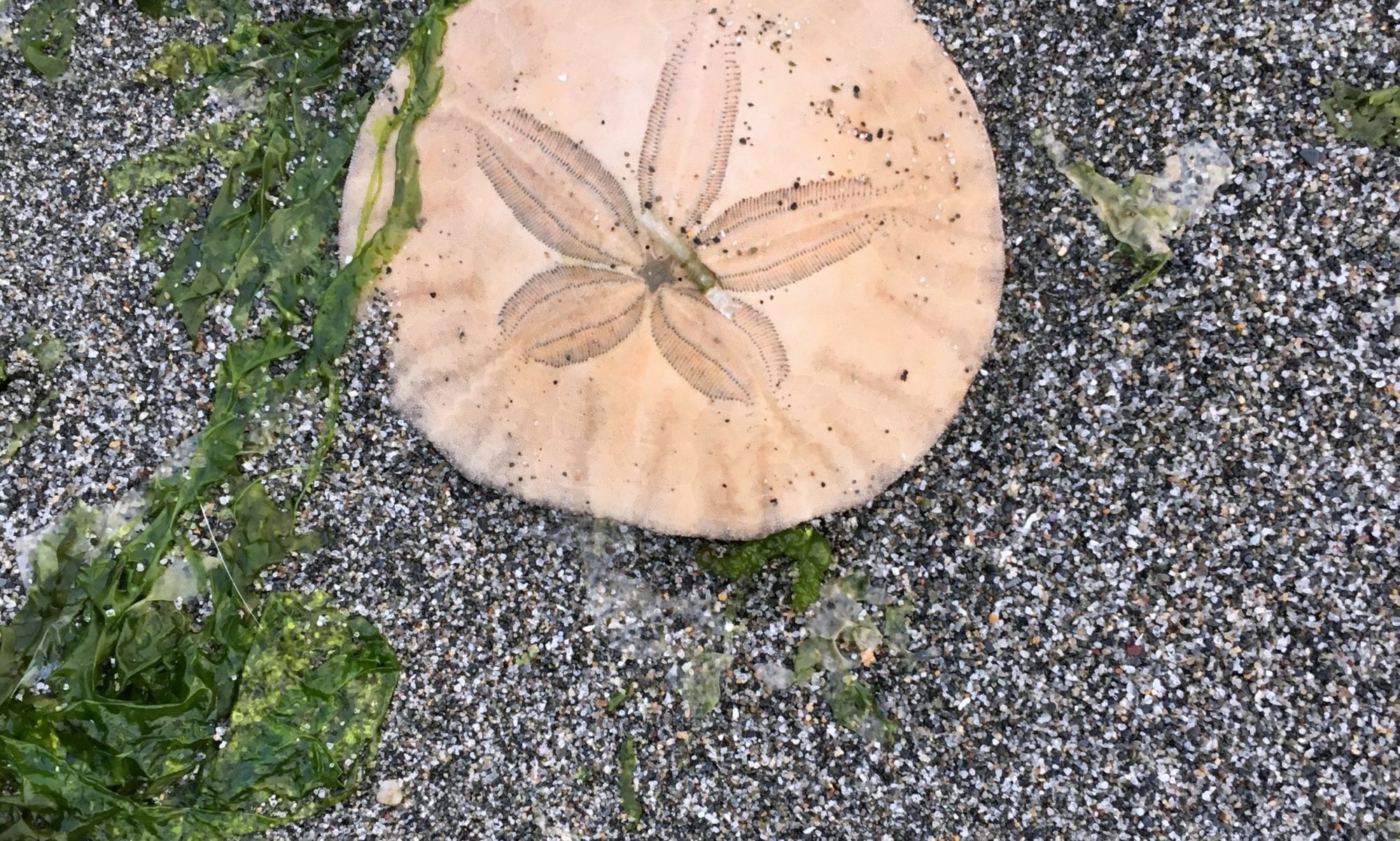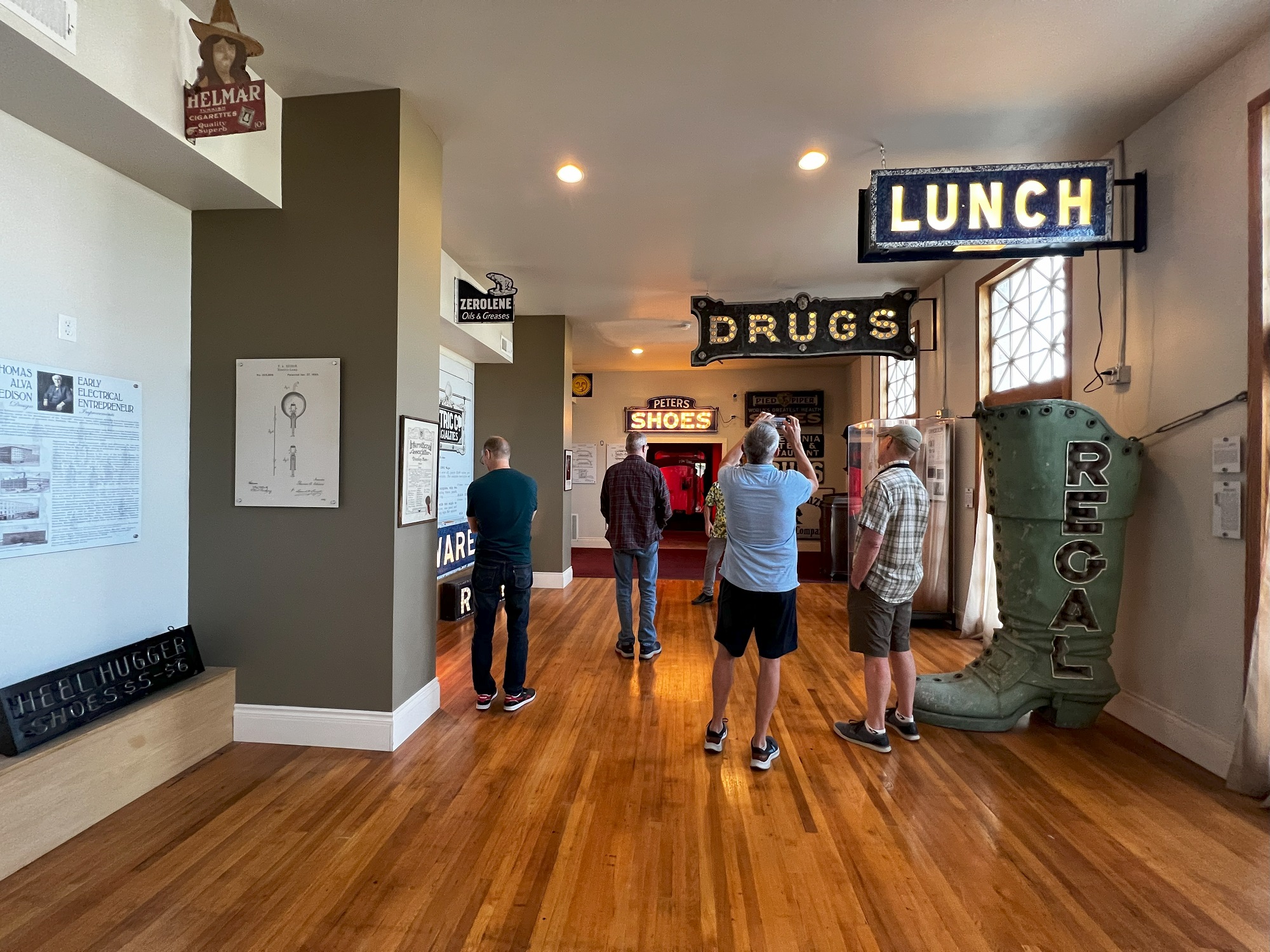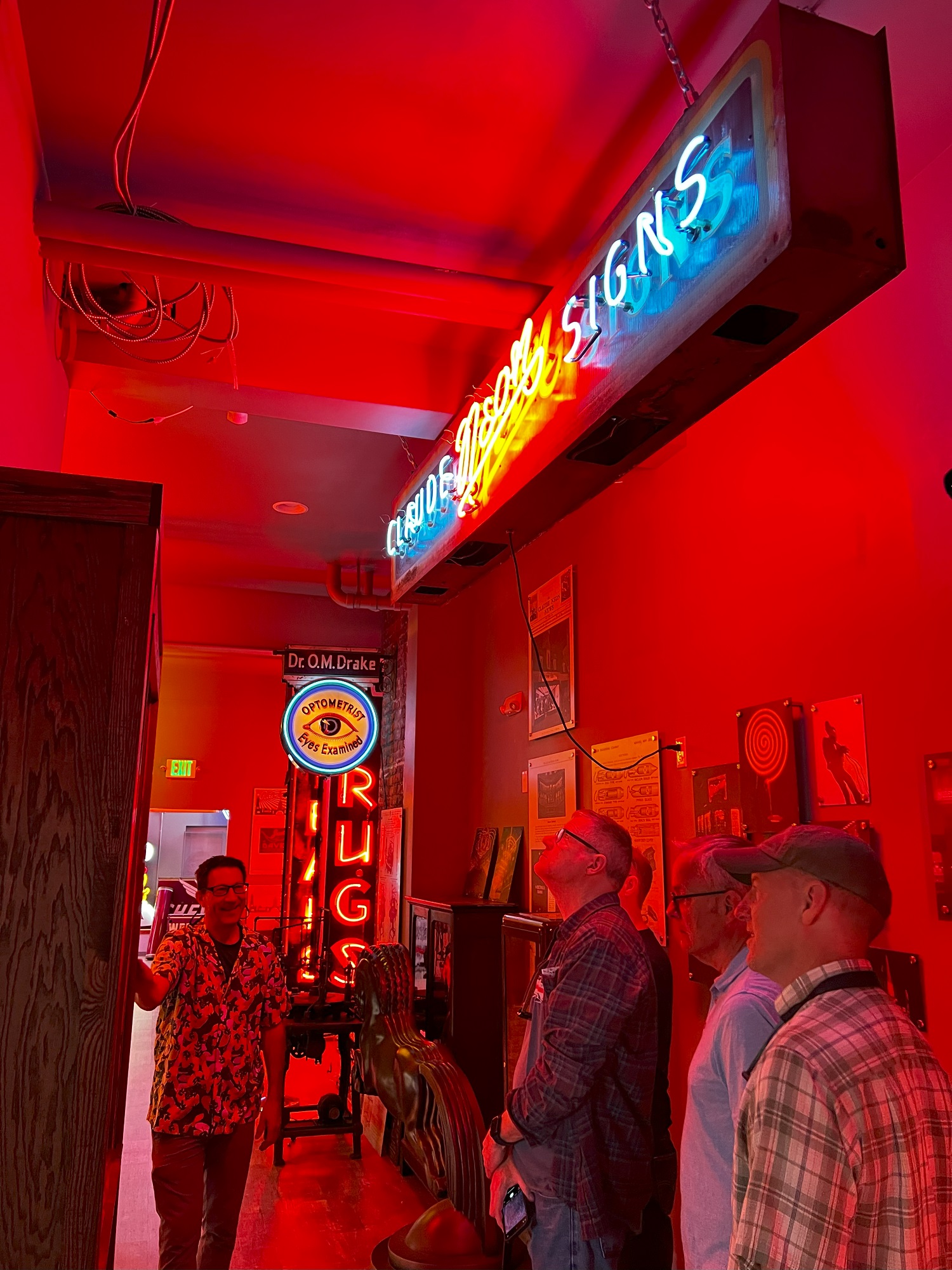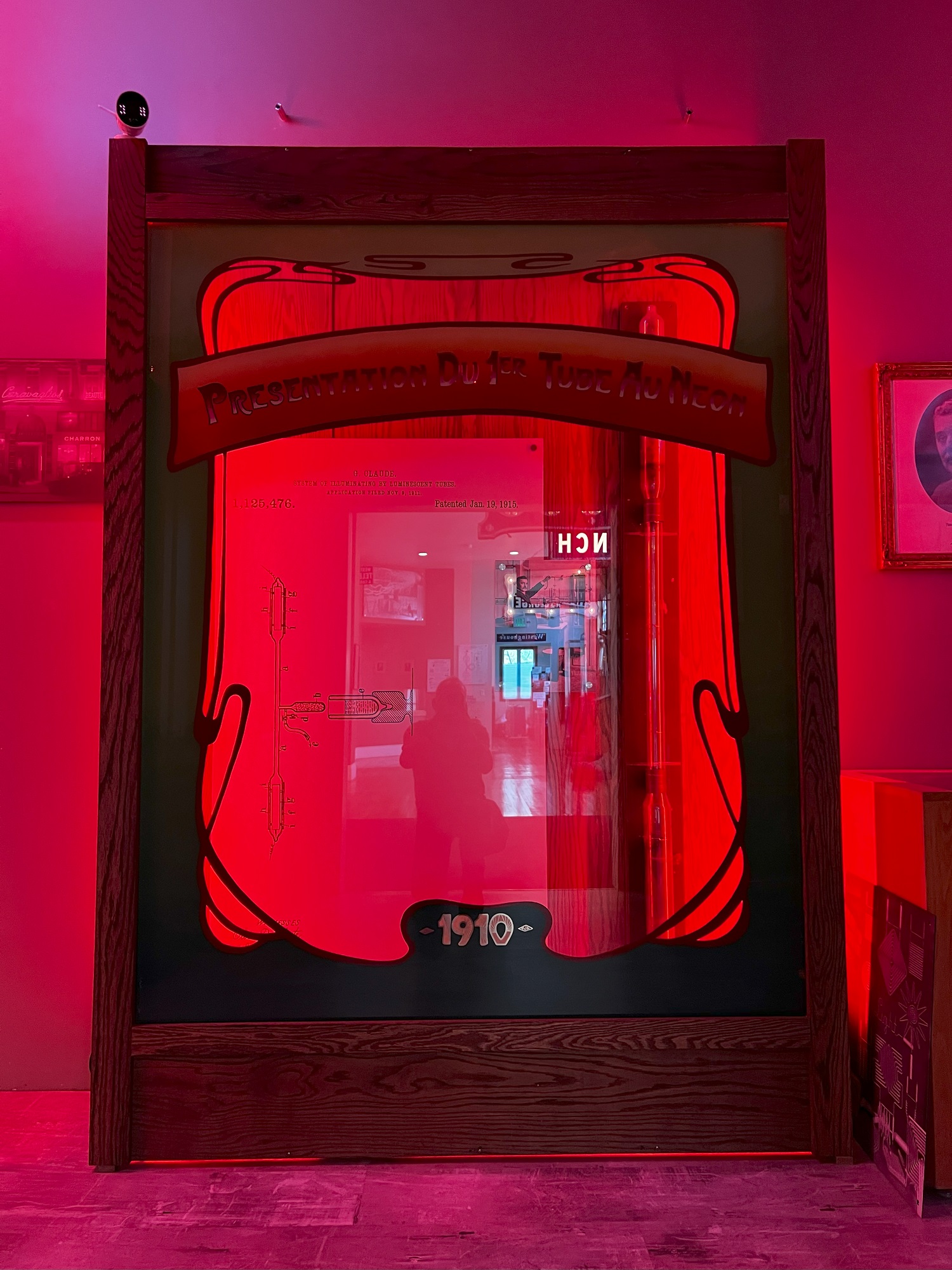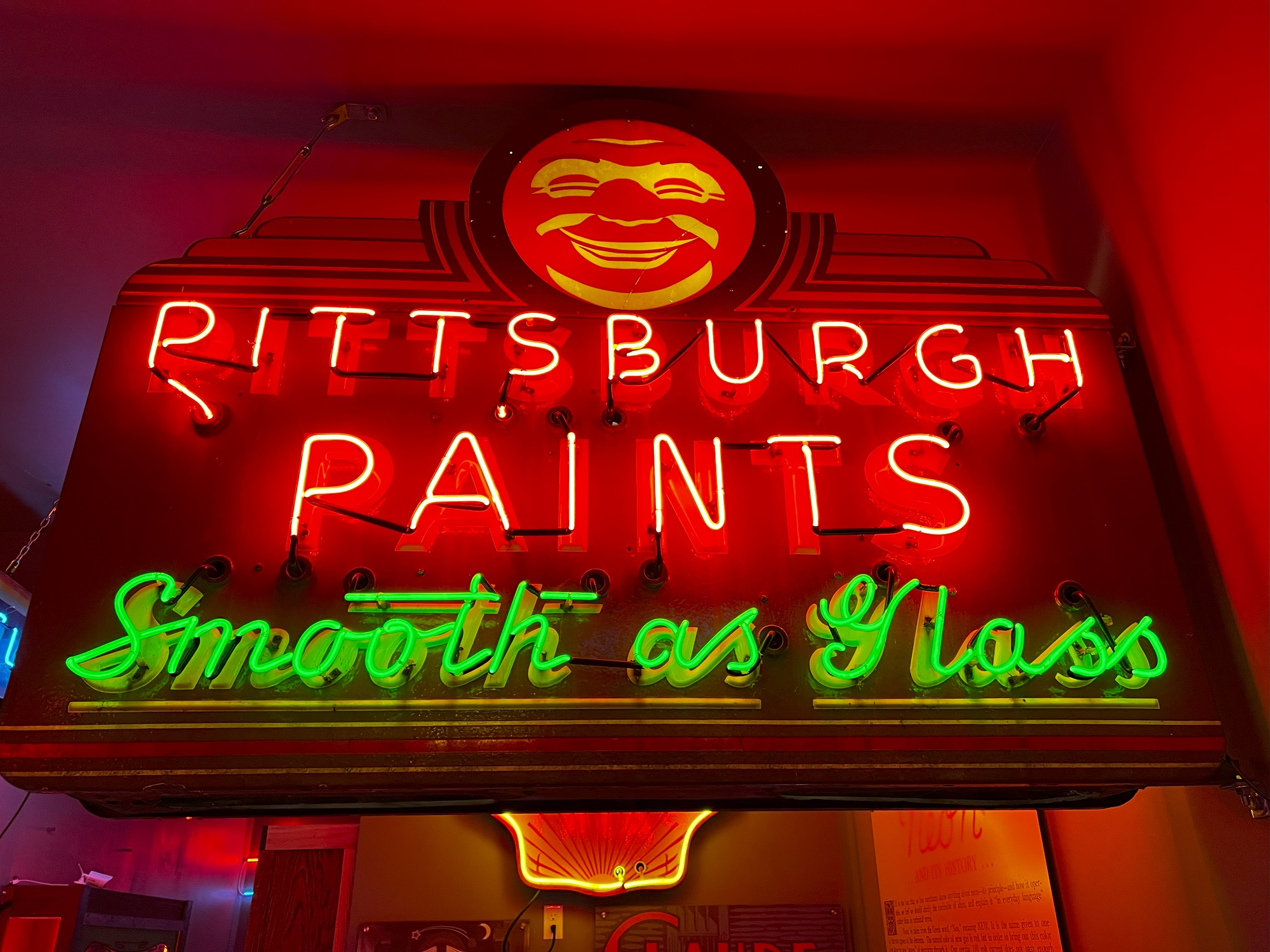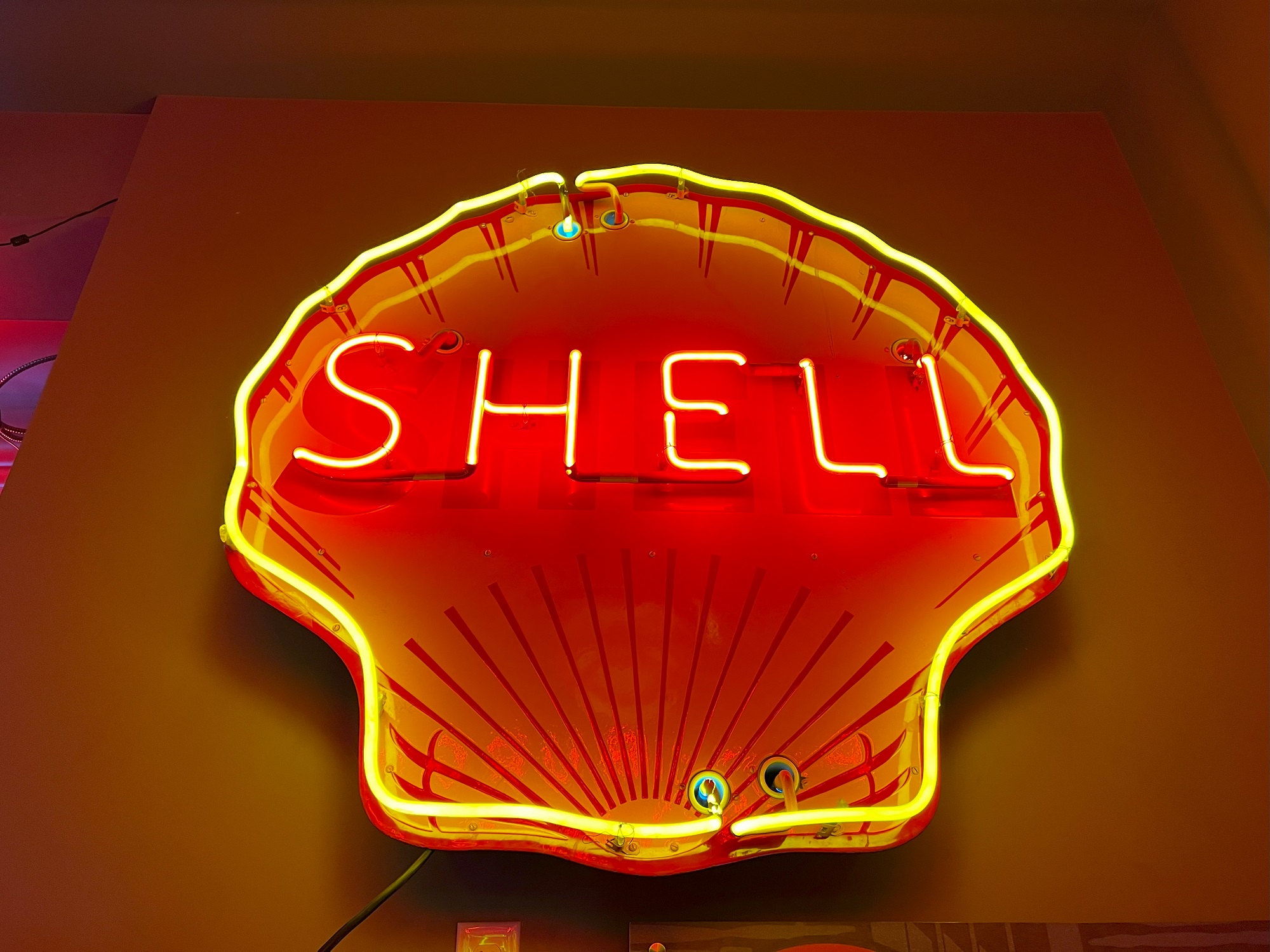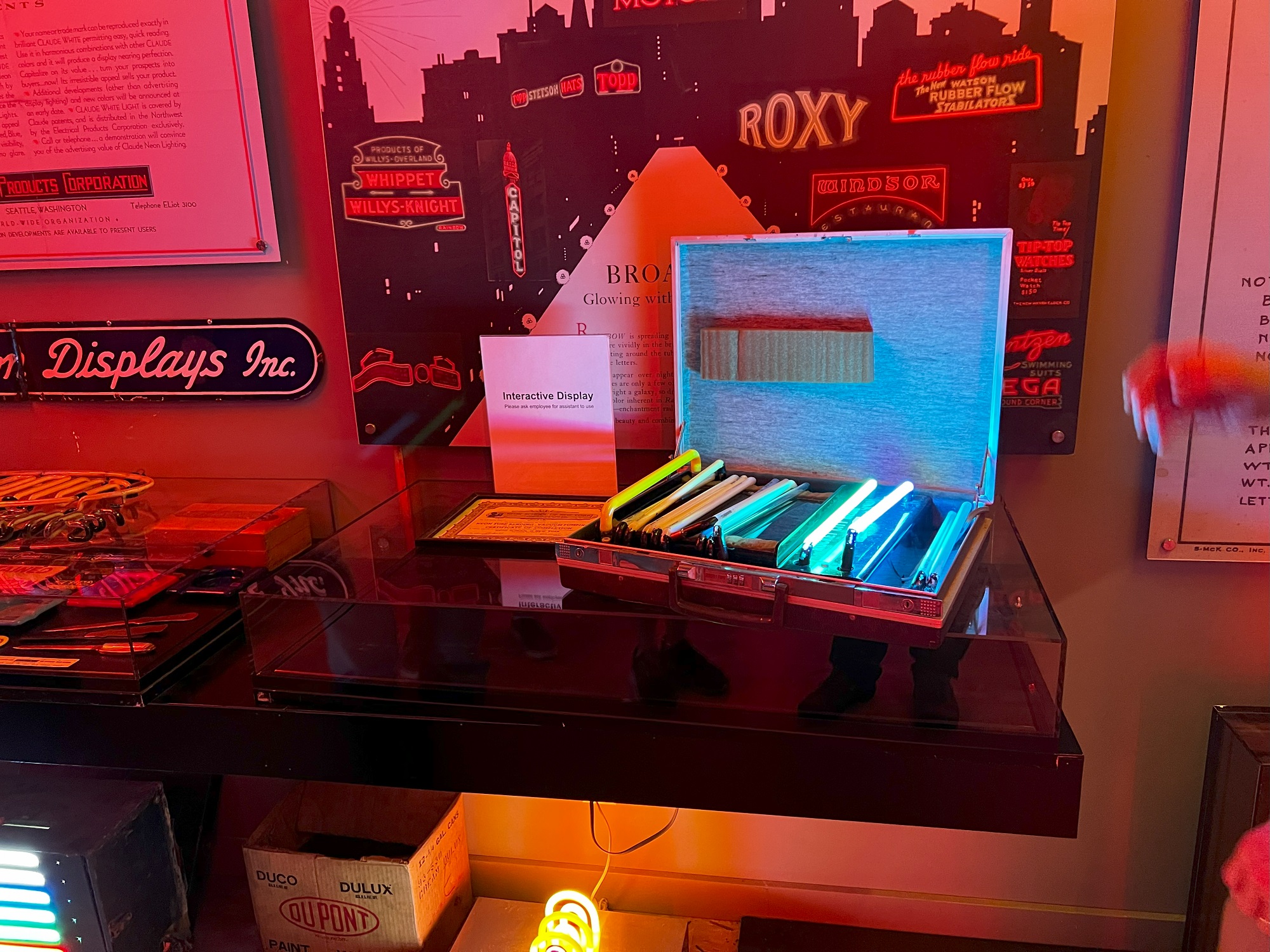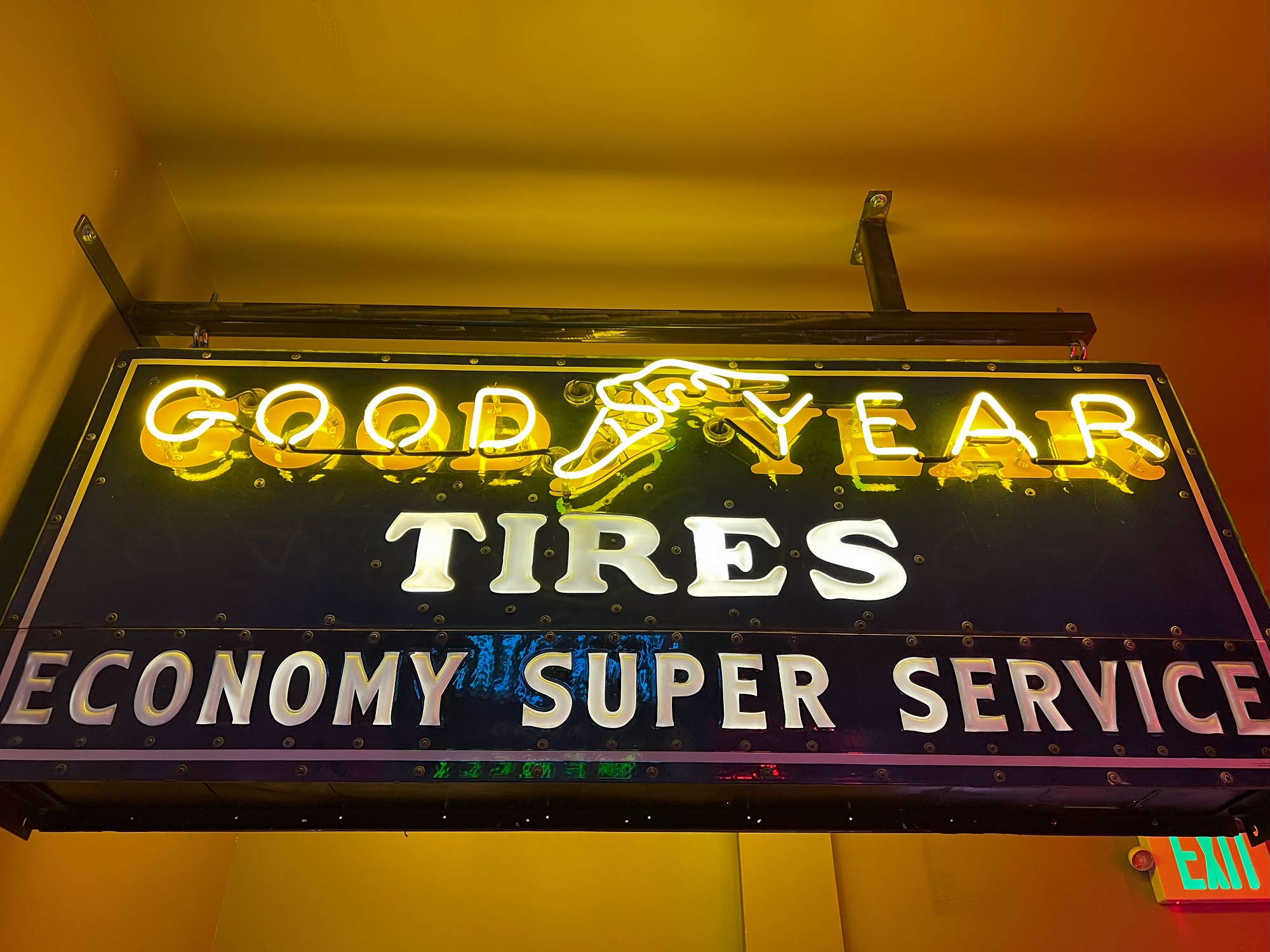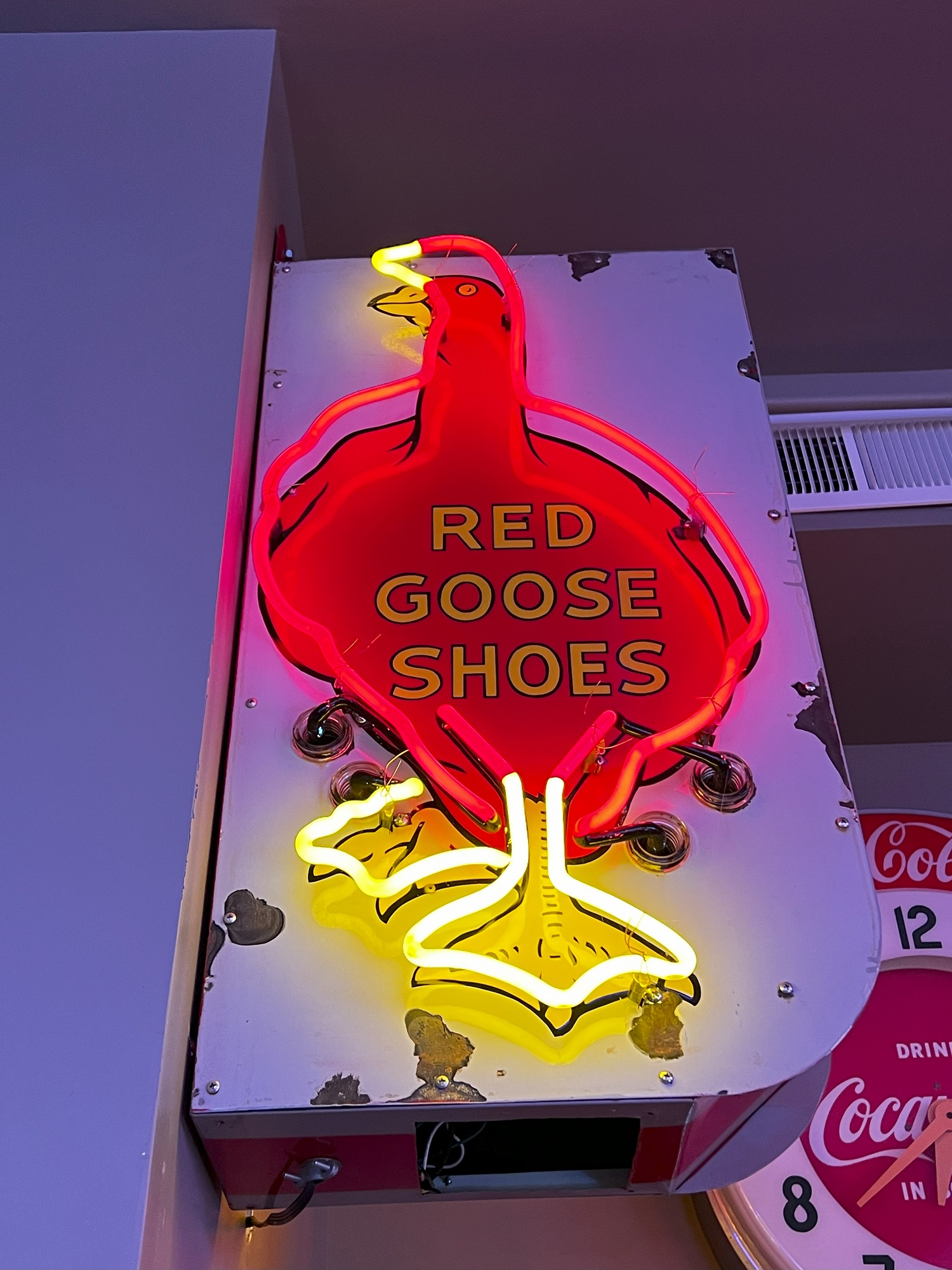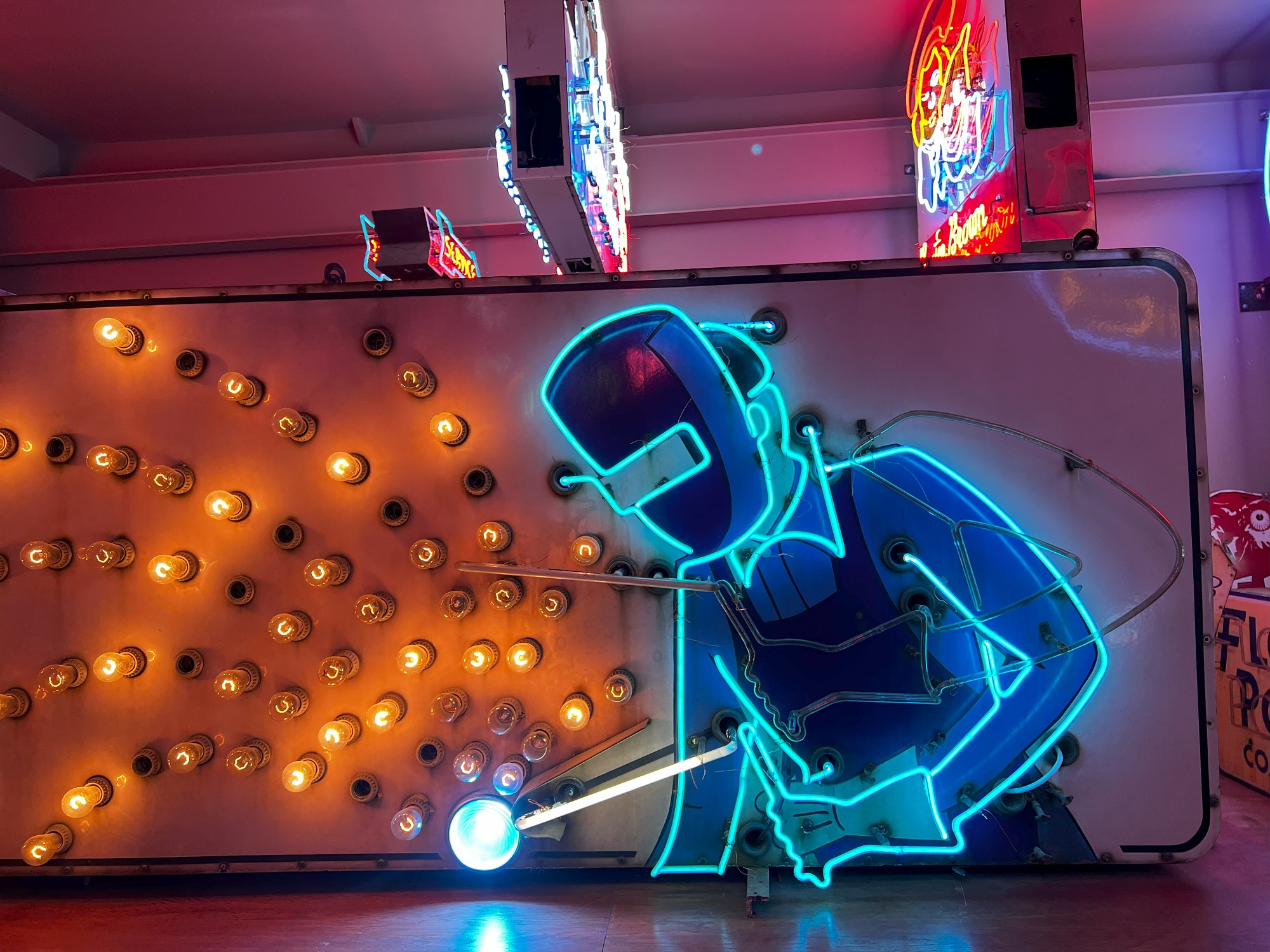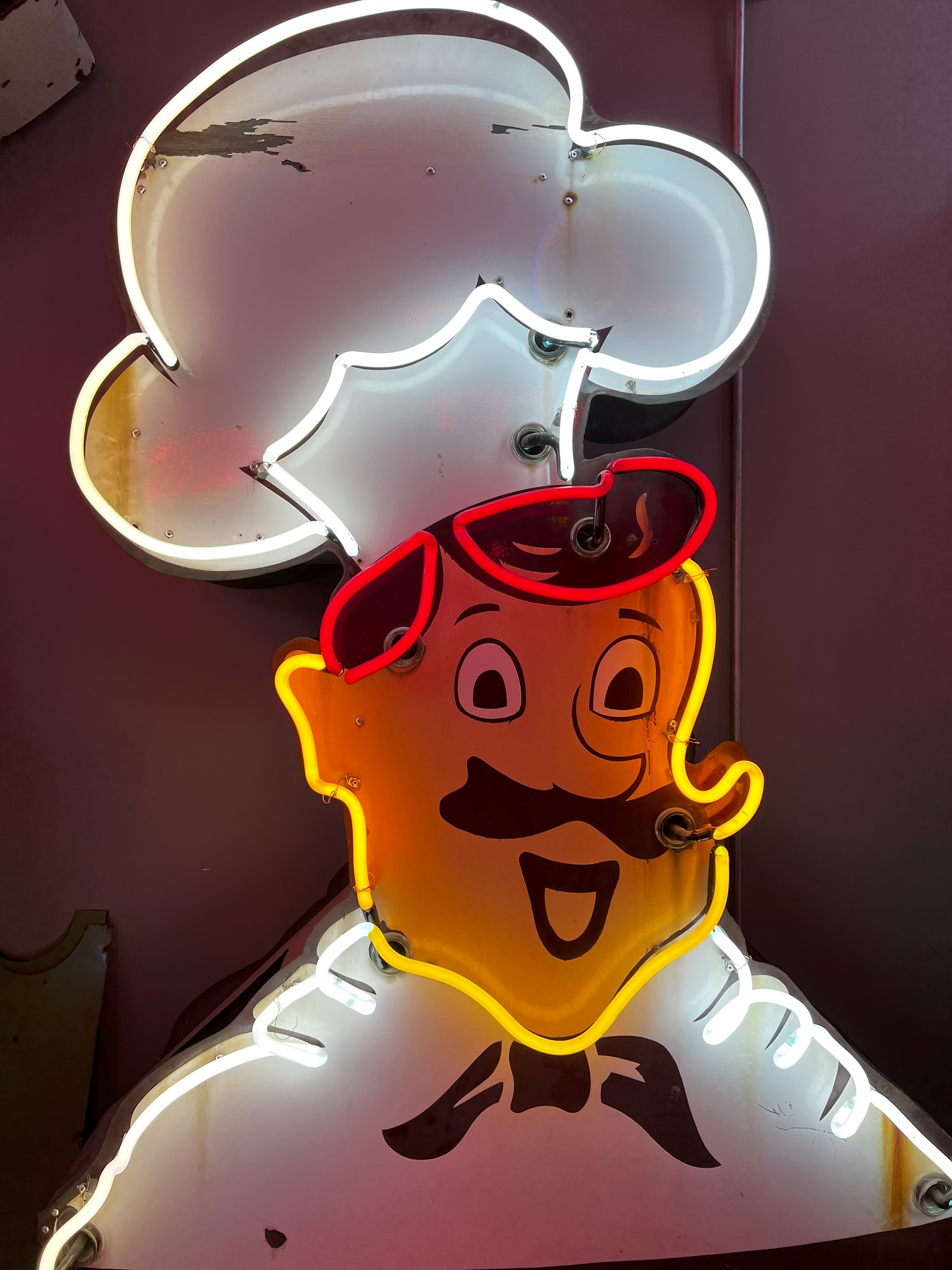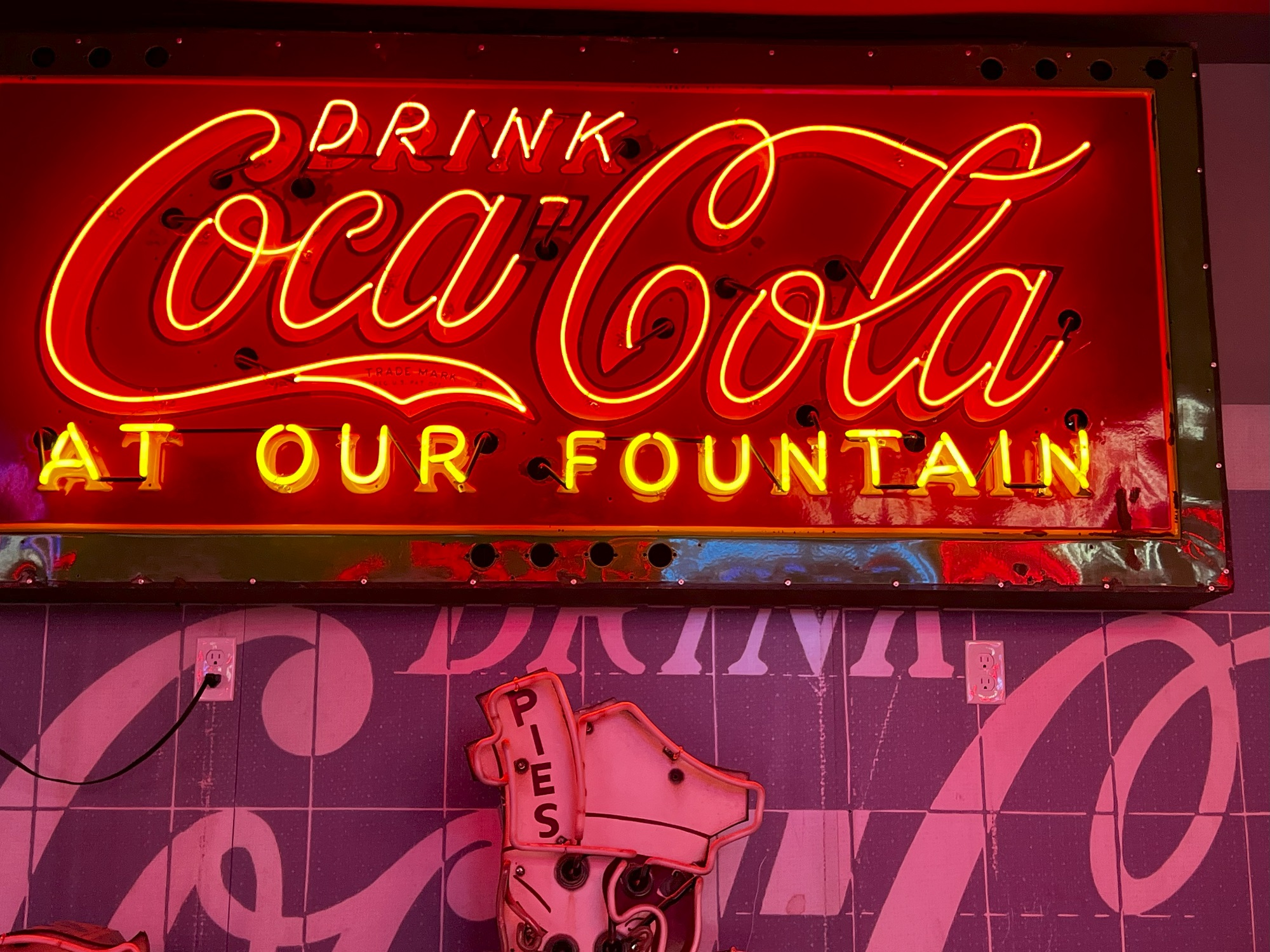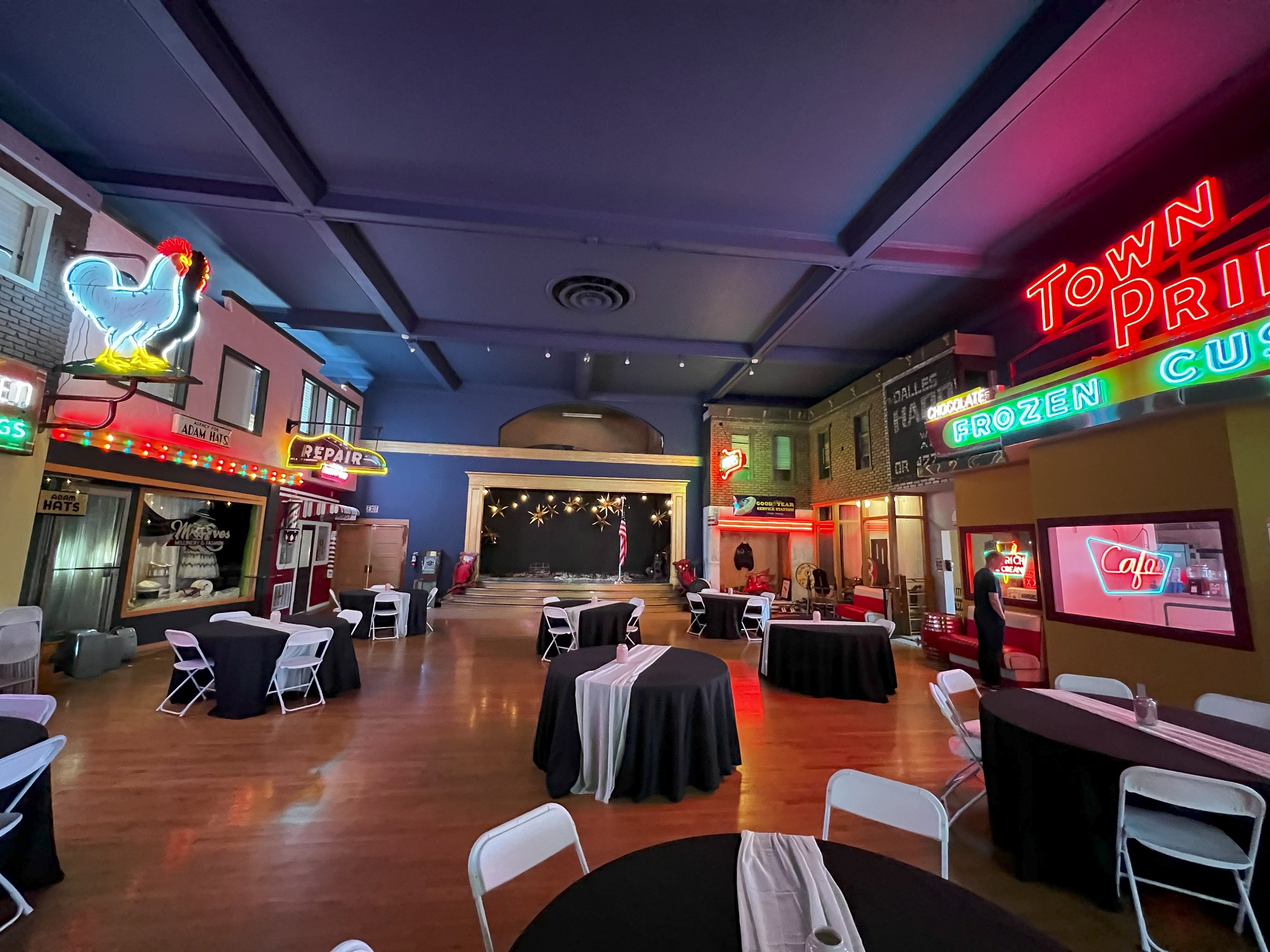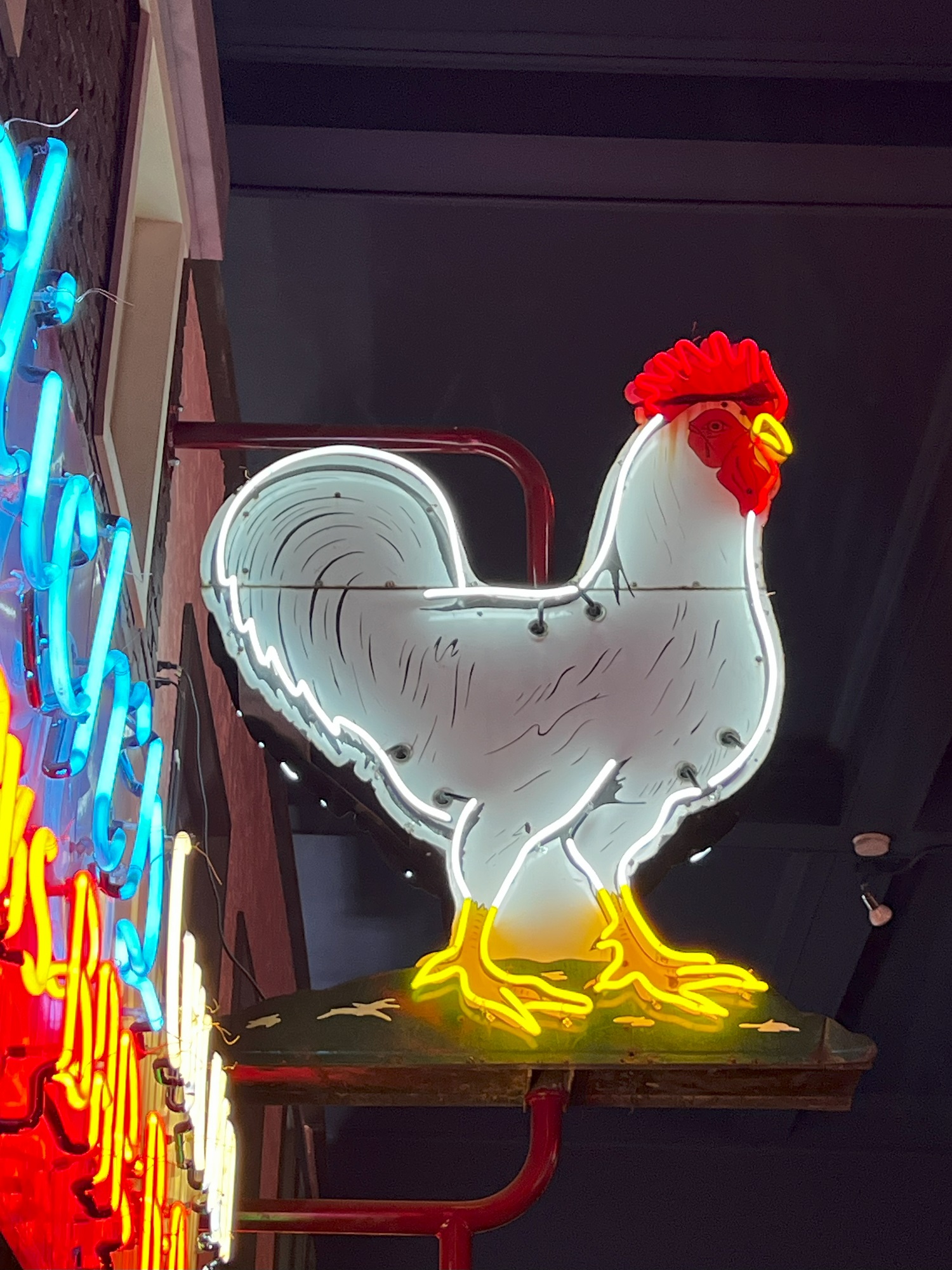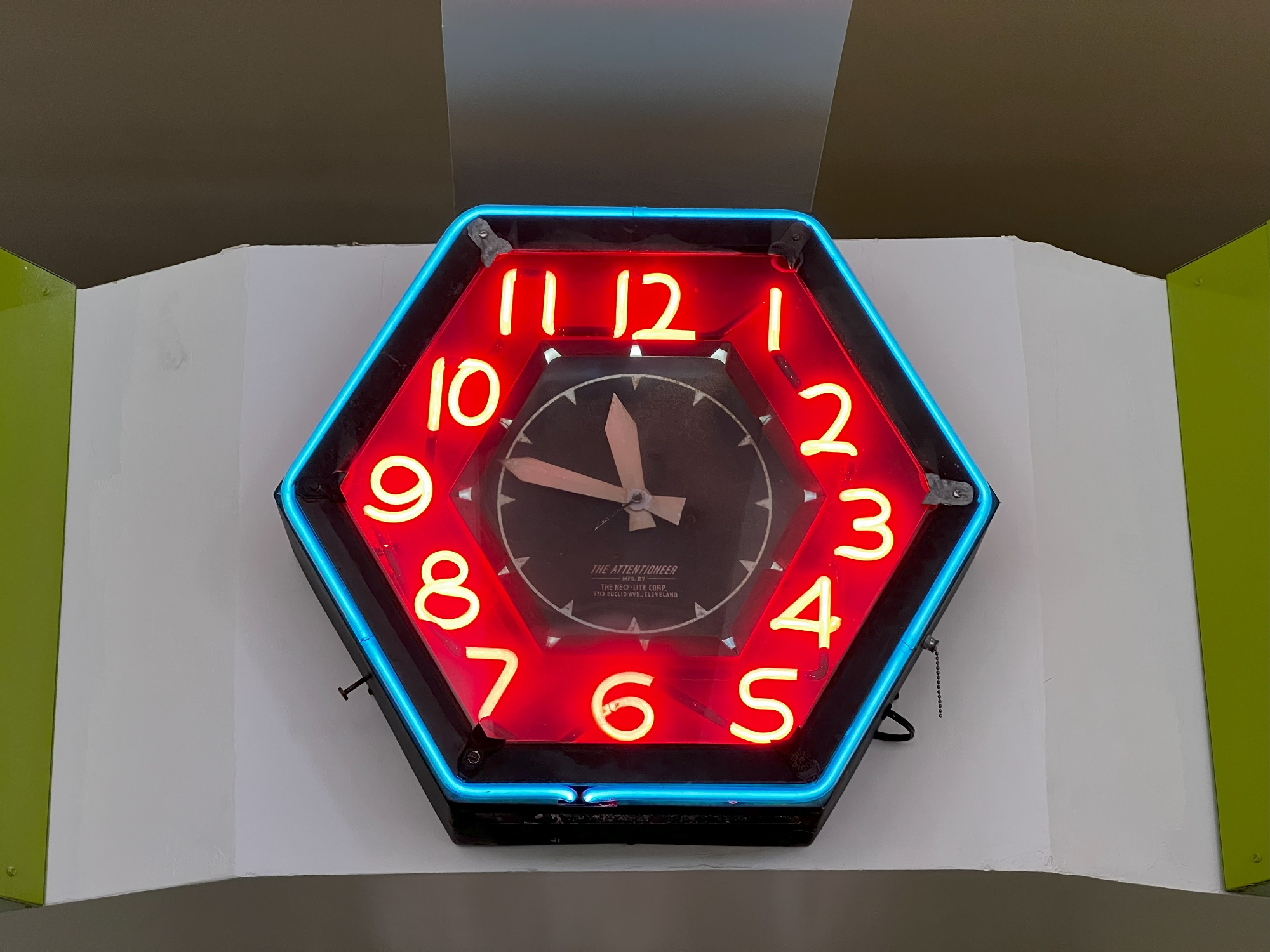These pictures are all from inside the National Neon Sign Museum in the former Elks Building in the heart of The Dalles downtown historic district.
The museum narrates the evolution of the electric sign, from pre-electric and gold leaf signage to the invention and widespread use of neon signs.
It houses one of the largest collections of neon storefront signs in the world.
Yes, neon signage has been in decline the last few decades, but many cities are now concerned with preserving and restoring their antique neon signs.
Fun fact— Argon is much more versatile than neon for creating colors, and some 75% of ‘neon’ signs actually has argon in the tubes and not neon. ‘Neon’ is the name that stuck for all signs that use either neon or argon.
Pictures:
That’s David Benko himself in one of the pictures, telling us about the history of neon signs. He established the museum in 2018, and is the curator— with a lifelong passion for collecting neon signs.
The museum has displays that show inventors and their experimentation with electricity in the 1700s and 1800s, the discovery of the noble gases argon (1894) and neon (1898) and a model of the patent for the first neon sign tubes that were created in 1910 by French engineer and inventor Georges Claude (the third picture).
By the end of the Roaring ’20s, most American cities were electrified. Illuminated streets and storefronts lured people into the streets at night time. The commercialization of neon signs took off in the 1930s after the Great Depression.
